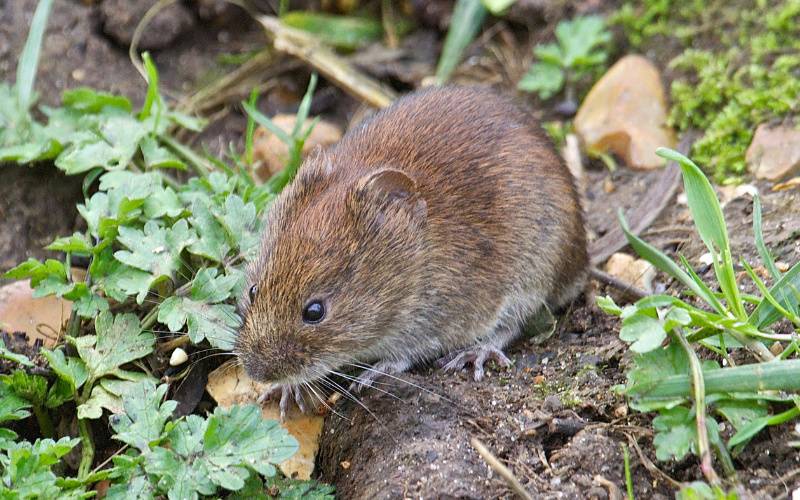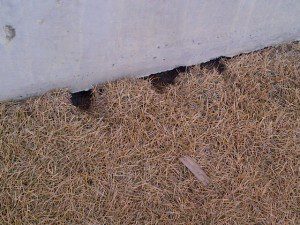Vole Grass Damage Solutions: Effective Control Techniques
Vole Grass Damage Solutions: Effective Control Techniques
Blog Article
Grasping Vole Bug Control: Thorough Insights on Infestation Avoidance and Treatment Techniques
By identifying the refined indicators of vole problem early on, we can take proactive steps to avoid widespread damage. In this conversation, we will certainly check out the nuances of vole actions, dive right into the recognition of problem indicators, and reveal the most reliable avoidance and therapy techniques.
Recognizing Vole Actions
Taking a look at the foraging patterns of voles uses valuable insights right into their behavior and habitat preferences. By observing their foraging behavior, researchers can obtain a much better understanding of where voles choose to establish their environments and the level of their environmental impact.
Study shows that voles show selective feeding habits, preferring tubers, origins, and seeds. This dietary choice affects their foraging patterns, leading them to locations abundant in plants and ground cover. Furthermore, voles are recognized to develop fancy passage systems for foraging and nesting functions, suggesting a high degree of versatility to their surroundings.
Recognizing vole actions is important for implementing targeted pest control actions that interrupt their habitat preferences and foraging activities (vole yard damage). By studying their behavior, experts can create more effective avoidance and treatment strategies to handle vole invasions

Identifying Indications of Vole Invasion
Vole invasions can be detected by recognizing certain indications of their presence in an area. One of the most typical signs of a vole invasion is the visibility of surface area paths. Voles produce networks of slim paths on the ground that are commonly about 2 inches wide. These paths are usually located in grassy areas or under compost or ground cover where voles can move freely and look for food.
Another essential indicator of vole problem is the existence of little burrow openings in the ground. Voles dig superficial burrow systems with multiple entrances and leaves. These burrows serve as shelter and nesting websites for the voles. Furthermore, voles are known to leave behind eaten plant stems, roots, and light bulbs near their burrow openings, suggesting their feeding task in the area.
Finding these droppings along runways or near burrow openings can verify a vole infestation. By being alert for these indicators, building owners can promptly deal with vole problems and stop additional damage.
Implementing Positive Prevention Steps

Additionally, utilizing natural vole deterrents like castor oil-based repellents or killer urine can serve as effective precautionary measures. It is likewise suggested to consistently evaluate outside spaces for any kind of signs of vole task, such as paths or delve openings, to address learn this here now prospective invasions promptly. vole yard damage. By adopting these proactive avoidance approaches, residential property owners can significantly minimize the possibility of vole damages and maintain the health and wellness and aesthetic appeals of their landscapes
Efficient Treatment Strategies
Incorporating targeted capturing techniques and utilizing approved rodenticides are necessary components of reliable therapy methods for managing vole problems. Trapping can be an effective means to lower vole populaces, particularly when positioned strategically in their energetic runways. Snap catches and live traps can both be efficient, with the last enabling the capture and relocation of voles. When using rodenticides, it is vital to adhere to safety standards to avoid harm to non-target pets and family pets. Location rodenticides in safe lure stations to minimize risks to unintended targets. In addition, habitat alteration, such as decreasing ground cover and removing resources of food, can help prevent voles from infesting a location. Regular monitoring and maintenance are likewise crucial elements of successful therapy techniques to make sure that vole populations are kept under control. By incorporating capturing, rodenticides, environment adjustment, and consistent surveillance, efficient vole insect control can be achieved.
Monitoring and Upkeep Tips
Normal tracking enables for the early discovery of vole activity, allowing timely intervention prior to infestations get worse. To properly keep an eye on vole populaces, purposefully positioned traps can be utilized in vole her latest blog runways or near burrow entries.
Furthermore, maintaining a clean and well-kept landscape is necessary in vole prevention. Cleaning away debris, such as heaps of timber or thick vegetation, eliminates prospective vole habitats. Frequently cutting grass and trimming vegetation helps lower vole hiding areas and decreases their accessibility to food resources.
Moreover, recurring maintenance of physical barriers, such as fences or cable mesh, is essential to avoid vole breach. Evaluating and fixing any type of problems to these frameworks makes certain that vole control continues to be reliable in protecting homes from problems. By incorporating these surveillance and maintenance methods right into a thorough vole parasite control strategy, people can efficiently take care of vole populaces and secure their buildings from damages.
Conclusion
To conclude, understanding vole parasite control calls for a strong understanding of vole actions, the capacity to recognize indications of invasion, carrying out aggressive prevention procedures, efficient therapy strategies, and regular surveillance and maintenance. By taking a comprehensive method to vole control, people can effectively handle and avoid invasions, eventually safeguarding their residential property and bordering setting from damage triggered by this content these tiny rodents.
In this discussion, we will certainly discover the nuances of vole habits, dig into the identification of problem indicators, and discover the most efficient avoidance and treatment methods.Including targeted capturing techniques and making use of authorized rodenticides are necessary parts of effective therapy methods for managing vole invasions. To properly keep track of vole populaces, strategically placed traps can be used in vole paths or near burrow entrances. Inspecting and fixing any damages to these frameworks guarantees that vole control stays effective in securing properties from infestations. By including these surveillance and maintenance methods right into a comprehensive vole bug control plan, people can efficiently manage vole populations and shield their properties from damages.
Report this page